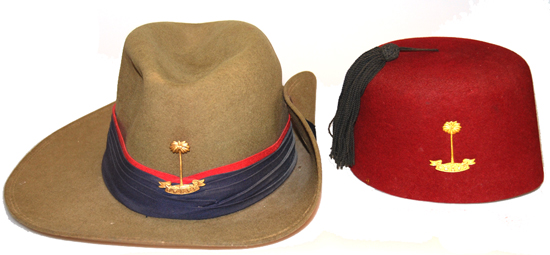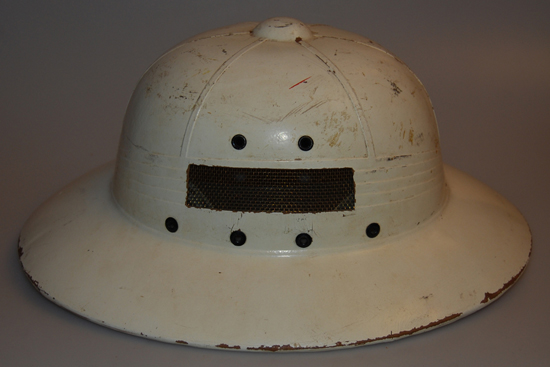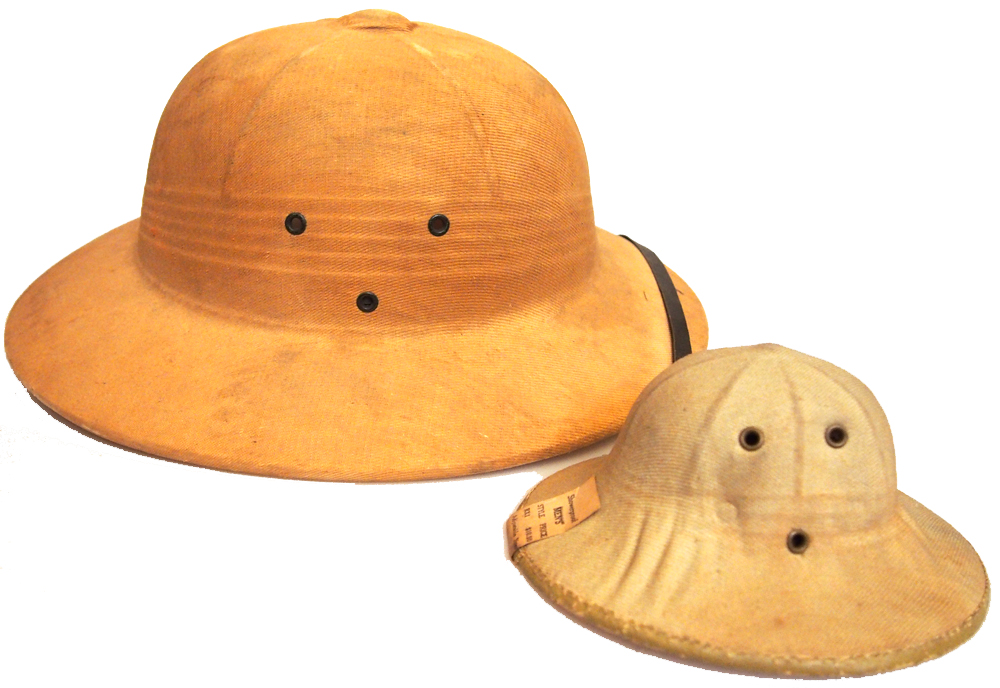 Recently a potential one-of-a-kind item surfaced on eBay. It was a “salesman sample” of the American pressed fiber helmet. What made this particular find so interesting is that it was truly a salesman’s sample in that it wasn’t full size. So why exactly was a one-quarter scale helmet created?
Recently a potential one-of-a-kind item surfaced on eBay. It was a “salesman sample” of the American pressed fiber helmet. What made this particular find so interesting is that it was truly a salesman’s sample in that it wasn’t full size. So why exactly was a one-quarter scale helmet created?
Category Archives: World War II
Headdress of the Royal West African Frontier Force
The Royal West African Frontier Force was a multi-battalion field force, which was formed by the British Colonial Office in 1900 to help garrison the West African colonies of Nigeria, Gold Coast, Sierra Leone and Gambia. It was originally designated the “West African Frontier Force,” and in 1928 received the royal patronage – becoming the Royal West African Frontier Force (RWAFF).
On formation it comprised the Gold Coast Regiment, Northern Nigeria Regiment, Southern Nigeria Regiment, the Sierra Leone Battalion and the Gambia Company. The parade uniform of the RWAFF was a distinctive one and consisted of khaki drill shorts with red fezzes, along with scarlet “zouave” style jackets edged in yellow and red cummerbunds. Artillery units wore a blue jacket with yellow braid, while engineers wore red jackets with blue braid. British officers originally wore sun helmets, and later a bush or slouch hat. Continue reading
Vented International Hat Company Helmet
During the Second World War the St. Louis, Missouri-based International Hat Company, formerly the International Harvest Hat Company, produced the “pressed fiber” sun helmet for the United States Army, Marines and Navy. Tens of thousands of these were produced by International Hat Company based on the pattern developed by Hawley Products Company.
It is well-known, and widely established, that the United States Marine Corp used the International Hat pith helmet as both combat gear, as well as a standard part of the Marine Corps training uniform. In both roles the helmet had one major drawback – it didn’t provide adequate ventilation to the wearer’s head.
The Wolseley Helmet of Major George Henry William Baird, Seaforth Highlanders.
Major George H. W. Baird was born on 10 January 1903. He married Catherine Augusta Forester on 22 January 1931. George Baird was educated at Eton College, Eton, Berkshire, England.
George Baird was a Gentleman Cadet at the Royal Military College and was gazetted as a 2nd Lt in the Seaforth Highlanders on 30th August 1923. In October of 1928, Lt. G. H. W. Baird was selected for service on Staff and was appointed A.D.C. to the Governor & G.O.C. in C. (General Officer Commanding in Chief) Gibraltar. I believe this is the time period when he purchased this helmet. Continue reading
The Luftwaffe Sun Helmet
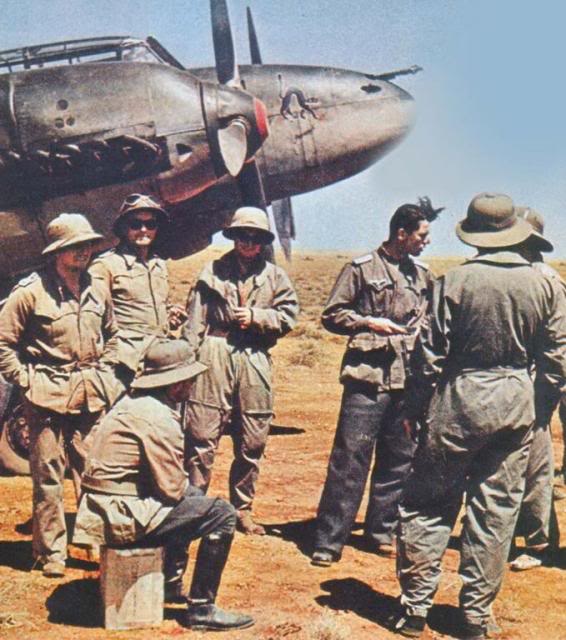 When the German army headed to North Africa and other tropical regions during the Second World War it utilized the sun helmet. The Luftwaffe, Germany’s air arm, followed ground units to the Mediterranean theater where it made up a significant portion of the “Afrika Korps,” and included the Fliegerführer Afrika.
When the German army headed to North Africa and other tropical regions during the Second World War it utilized the sun helmet. The Luftwaffe, Germany’s air arm, followed ground units to the Mediterranean theater where it made up a significant portion of the “Afrika Korps,” and included the Fliegerführer Afrika.
The Luftwafffe personnel, who included air crews, Flak troops and support units were equipped with a variation of the Model 1940 sun helmet. Continue reading
The Chinese Sun Helmet
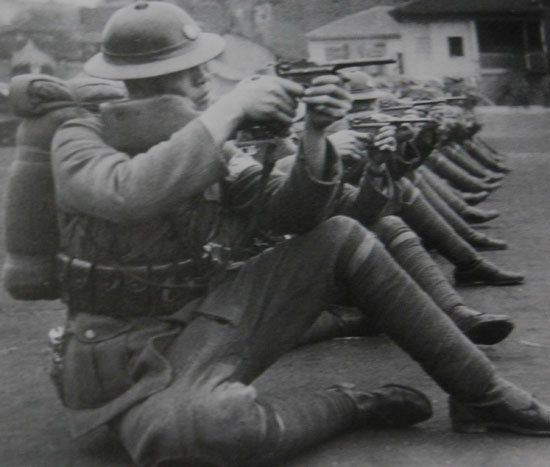 Many armies marched into China while wearing sun helmets. This included the European powers that fought in the Boxer Rebellion, the American soldiers that protected U.S. interests in the early 20th century, and notably the Japanese that invaded in 1937.
Many armies marched into China while wearing sun helmets. This included the European powers that fought in the Boxer Rebellion, the American soldiers that protected U.S. interests in the early 20th century, and notably the Japanese that invaded in 1937.
However, the sun helmet was also used by Nationalist forces during the prolonged war with Japan. Continue reading
The Canadian Royal Horse Artillery
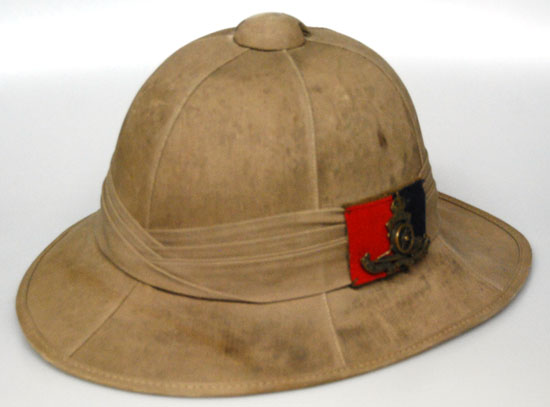 The Canadian military is most remembered for its heroic actions in Italy and Western Europe during the Second World War, but it was still active in every theater of war. More than 1.1 million Canadians served in the Army, Navy and Air Force and its entry into the conflict was the nation’s first independent declaration of war.
The Canadian military is most remembered for its heroic actions in Italy and Western Europe during the Second World War, but it was still active in every theater of war. More than 1.1 million Canadians served in the Army, Navy and Air Force and its entry into the conflict was the nation’s first independent declaration of war.
During the North African, Middle Eastern and Sicilian campaigns the Canadian army was outfitted in a tropical uniform. Among the more “anachronistic” looking of these was the uniform worn by units of the Royal Canadian Horse Artillery.

